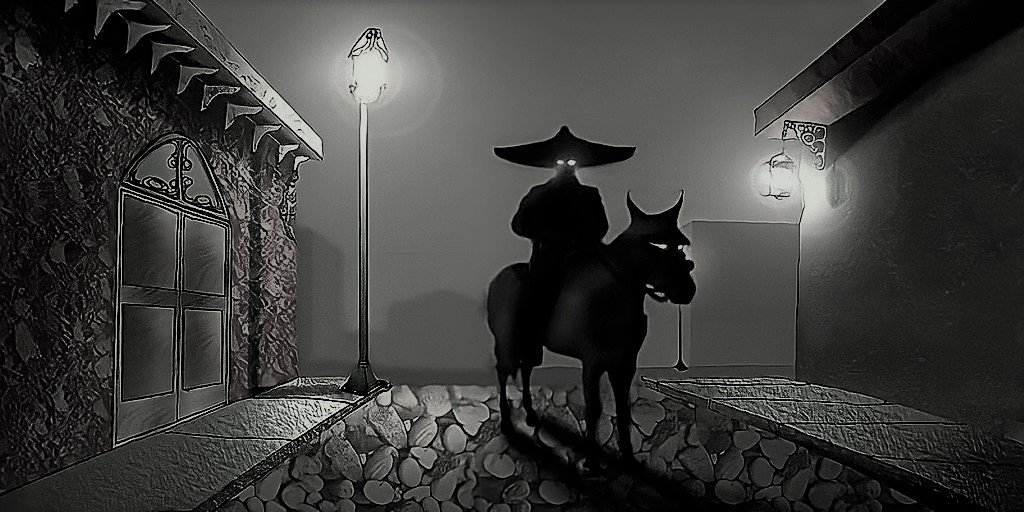The Mysterious Volcanic Eruption of 1808
In 1991 scientists and researchers studying ice cores from Greenland and Antarctica noticed something strange. When looking at the amount of sulfate trapped in the ice from the 1800’s they saw a huge spike around 1808/9.
Sulfate in ice usually denotes a volcanic eruption and at the levels they were seeing, it would have been a big one. Throughout history, when a massive volcano erupts, it’s a pretty big deal and yet, there were no known records of one occurring in 1808 and so, a mystery began.
“We’re just going to ignore this one right?” - Everyone circa 1808
Studying Ice Cores
Pretend you have a diary or journal, whatever you want to call it, but you write in it every day like someone is paying you to do it. Except you started from the back page of the journal and you’re working your way to the front. Each day is a new page till you get to the cover. This will all make sense in a second… depending on your reading speed.
Once you’re finished with the book it’s sealed forever. But, a scientist, them being the nosy types, wants to know what you wrote. The only way for them to do this is to use a special drill that cuts a tube of pages out of your book. They then study that tube by spreading out the pages and end up learning a lot about your everyday life based on the words they can see.
This is exactly what scientists do with ice cores. A glacier is like the Earth’s diary, snowfall captures and traps the particles in the air becoming like the words on a page. Each year that passes a new layer (or new page) is created on the glacier. In order for scientists to find out what was going on in the world at the time, they cut out tubes of ice from the glaciers and ‘read’ what was in the air.
Look at all those lines… is there an audiobook version?
The ice cores showed there was a spike in sulfate particles in the air around 1809 meaning there must have been a volcanic eruption around that time. Surprisingly the number of particles told scientists that this eruption wasn’t just your run-of-the-mill pop, it was one of the largest in the 19th century.
Volcanic eruptions are measured using a scale called the Volcanic Explosivity Index (VEI) because ‘Mountain Go Boom Boom Index’ was probably already taken. The scale goes from 0 to 8 with an eruption of 8 being considered a super volcanic eruption. There hasn’t been a VEI-8 level eruption in over 25 thousand years so you have nothing to worry about… or maybe it’s about time.
“After the last few years, I honestly wouldn’t be surprised.”
This mystery eruption from 1808 shows signs of being a VEI-6. There was only one other VEI-6 in the 19th century; the 1883 eruption of Krakatoa which caused the loudest sound in recorded history.
So if this VEI-6 eruption actually happened, how come no one ever said, “hey, someone write this down”? Well, it turns out someone sort of did.
Discovering the Past
It took almost 25 years from the moment scientists discovered the eruption in 1991 to when they finally found proof that people actually witnessed its effects. In 2014, Ph.D. student Alvaro Guevara-Murua and Dr. Caroline Williams searched through old documents from revered Columbian scientist Francisco Jose de Caldas and found what they were looking for.
Between 1805 and 1810, Caldas was the Director of the Astronomical Observatory in Bogota, Columbia, so looking up at the sky was probably a daily task for him. According to his documents from December 11th, 1808 to February 1809, he witnessed a mysterious transparent cloud that obstructed the sun. This caused it to “appear as the moon” and for the temperature to drop to abnormally cold temperatures.
Today we know this was caused by the release of sulfur dioxide from the volcano into the atmosphere. If a large enough volcano were to release a substantial amount of sulfur dioxide, the particles could essentially block out the sun and cause a volcanic winter dropping temperatures worldwide.
But a bigger question remained, how come this wasn’t big news for the time?
Turns out most countries in Europe were a little busy with a little man with a complex. The years 1808/9 were the height of the Napoleonic Wars that wouldn’t end for another 6 years. Meanwhile many countries in the Americas were declaring their independence from Spain leading to the Spanish American Wars for Independence.
“Well that’s not supposed to look like that… anyway, WAR!!!” - Half the world
Still a Mystery
Despite another document found written by a physician in Peru that noted the change in the sun’s appearance, there were no other pieces of evidence pointing to where the volcanic eruption happened. The best guess was somewhere in the southern hemisphere which turns out to be a pretty big place.
While researchers essentially had confirmation of a VEI-6 eruption, solving the mystery of the sulfates found in 1991, they were still left with plenty of questions. But, the discovery did help give credence to another theory.
In 1816 the world experienced what came to be known as, the Year Without a Summer. This was seemingly solely caused by a volcano registering at a VEI-7 and the ensuing volcanic winter it caused. But, with the discovery of a mysterious eruption in 1808, it’s now accepted this mystery eruption helped kick off a global crisis.
Related Article: Mount Tambora: The Deadliest Volcanic Eruption
Quick Facts
I know, I know, Napoleon wasn’t actually short and was average height for the time.
The last VEI-6 volcanic eruption on Earth occurred in 1991 at Mount Pinatubo
The last VEI-7 volcanic eruption, and the only one in the last 500 years, occurred on April 10th, 1815 in Mount Tambora.
















